10 Lesser-Known Freshwater Fish Worth Targeting
When most anglers discuss their favorite freshwater catches, they typically mention popular species like bass, trout, or pike. However, North America’s lakes, rivers, and streams hold numerous fascinating yet underappreciated fish species that offer unique angling experiences. These lesser-known targets can provide exciting challenges, delicious meals, and the satisfaction of expanding your fishing repertoire beyond the mainstream species. Whether you’re looking to diversify your fishing experience or simply want to try something new, these ten underrated freshwater species deserve your attention on your next fishing expedition.
Bowfin: Living Fossils with Fighting Spirit

Often mistakenly dismissed as “trash fish,” bowfin are prehistoric creatures that have remained virtually unchanged for over 100 million years, earning them the nickname “living fossils.” These aggressive predators can grow to over 10 pounds and provide some of the most exciting fights in freshwater, with powerful runs and aerial acrobatics that rival bass. Their cylindrical bodies, rounded tails, and distinctive dorsal fins make them easily identifiable, while male bowfin develop vibrant green coloration during spawning season. Beyond the sporting challenge, bowfin play a crucial ecological role as apex predators in many swampy ecosystems throughout eastern North America, keeping other fish populations in check.
Freshwater Drum: The Rumbling Fighters
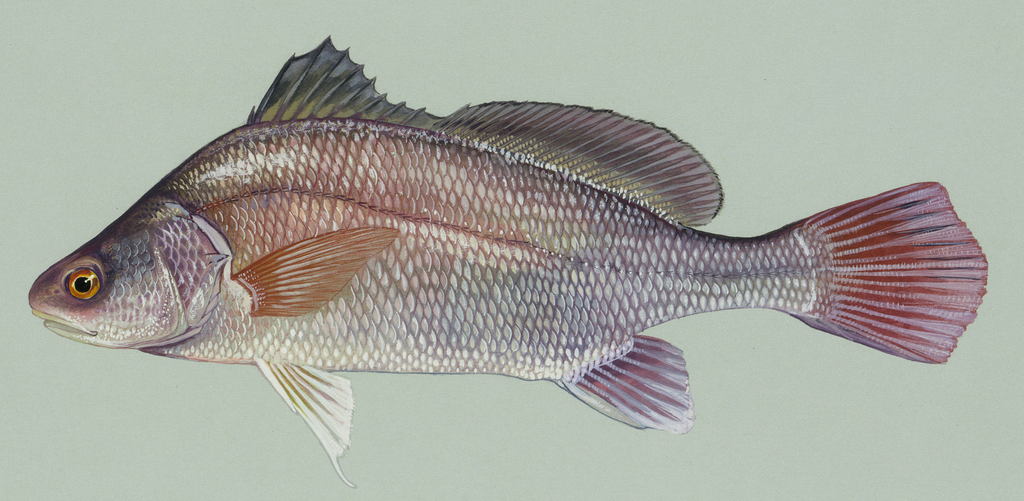
Freshwater drum, also known as sheepshead, offer a unique fishing experience partly due to the unusual grunting sound they produce using specialized muscles against their swim bladder. These silver-sided fish can grow impressively large, with specimens exceeding 30 pounds, though most caught by anglers weigh between 2-10 pounds. Their powerful bodies and strong pulls make them exciting sport on light tackle, and they readily bite on simple baits like crawlers, minnows, or crayfish. Unlike many other freshwater species, drum have pharyngeal teeth (throat teeth) which they use to crush mollusks and crustaceans, giving them a varied diet that helps them thrive in diverse habitats across North America’s central river systems.
White Bass: Schooling Speedsters
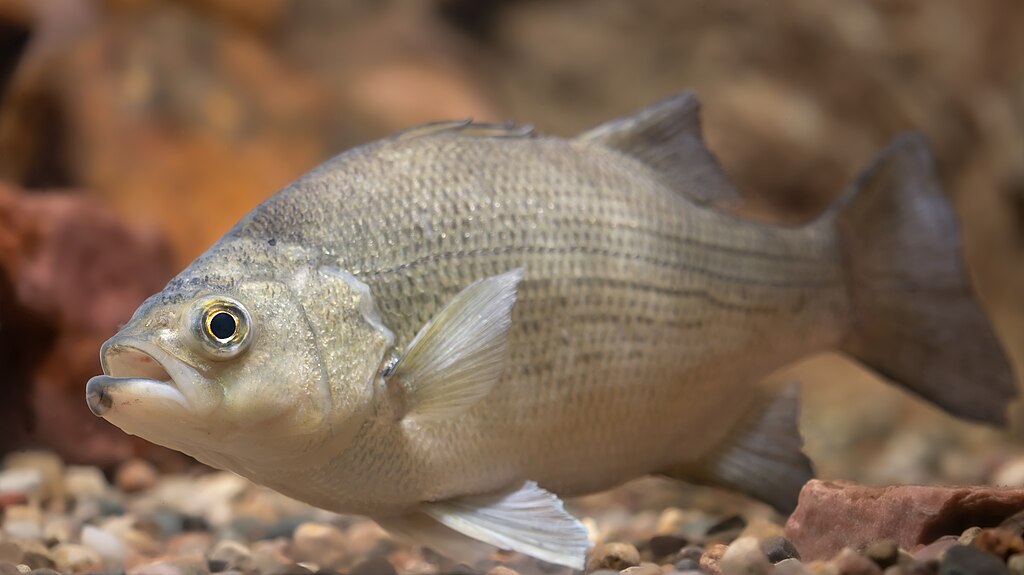
White bass create some of the most exciting seasonal fishing opportunities when they make their spring spawning runs from lakes into tributary rivers. These silver-sided predators travel in large schools, meaning when you find one, you’ve likely found dozens or even hundreds. Their aggressive feeding behavior and willingness to hit artificial lures make them particularly fun to target with light tackle, providing fast action when conditions are right. White bass typically range from 1-3 pounds, but what they lack in individual size they make up for in numbers and fighting ability, often making spectacular jumps when hooked. Their firm, white flesh also makes excellent table fare when properly prepared, particularly when caught from cooler waters.
Gar: Prehistoric Challenges
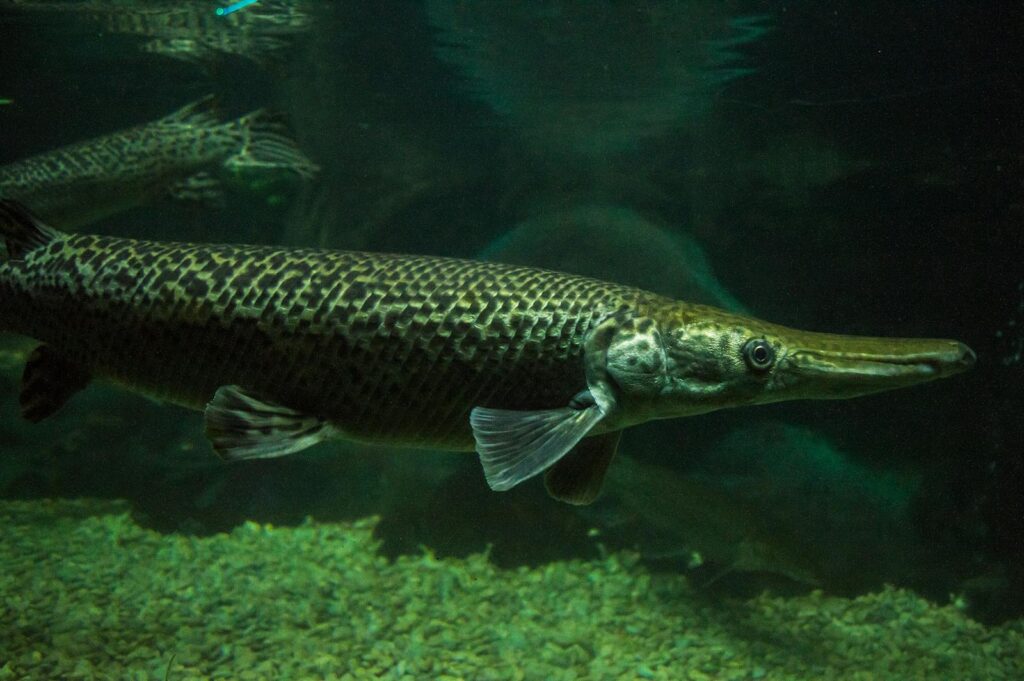
The various gar species—including longnose, shortnose, spotted, and alligator gar—present some of freshwater fishing’s most distinctive challenges with their armored scales and needle-like teeth. Fishing for gar often requires specialized techniques, with many anglers using rope lures that tangle in the fish’s toothy jaws rather than traditional hooks. These ancient fish can grow massive, with alligator gar potentially exceeding 300 pounds, though most species average between 10-30 pounds. Their prehistoric appearance, with elongated bodies and beak-like snouts filled with sharp teeth, makes them fascinating photographic trophies. Gar are also surprisingly aerial fighters, often making spectacular jumps when hooked, and they thrive in warm, sluggish waters where other gamefish struggle during summer months.
Fallfish: The Forgotten Native
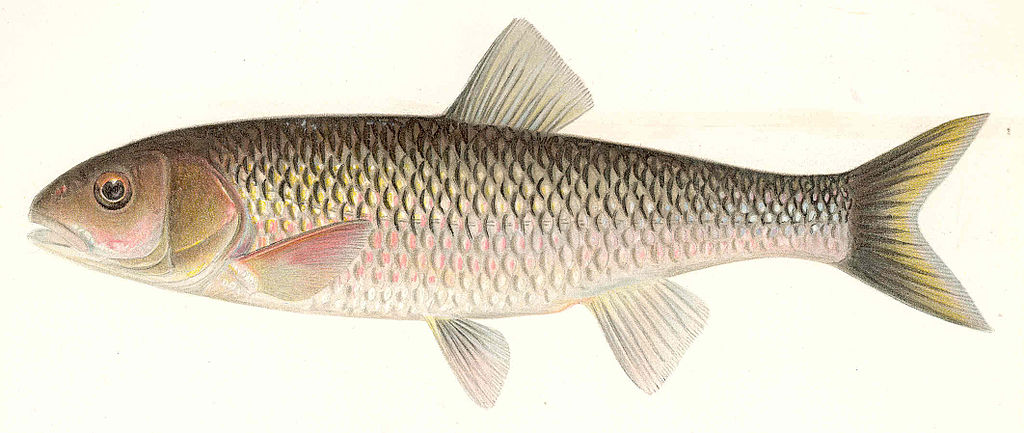
Often overlooked in eastern streams, fallfish are North America’s largest native minnow species, capable of reaching sizes over 18 inches and weighing up to 3 pounds—though most caught are considerably smaller. These silvery fish offer excellent sport on ultralight tackle, eagerly taking small lures, flies, and baits much like their trout cousins with whom they often share habitat. During spawning season, male fallfish build impressive gravel nests up to 3 feet in diameter, moving stones with their mouths to create distinct mounds visible from shore. These fish are particularly valuable targets in waters too warm for trout during summer months, providing action when other fishing opportunities slow down.
Buffalo Fish: The Freshwater Giants
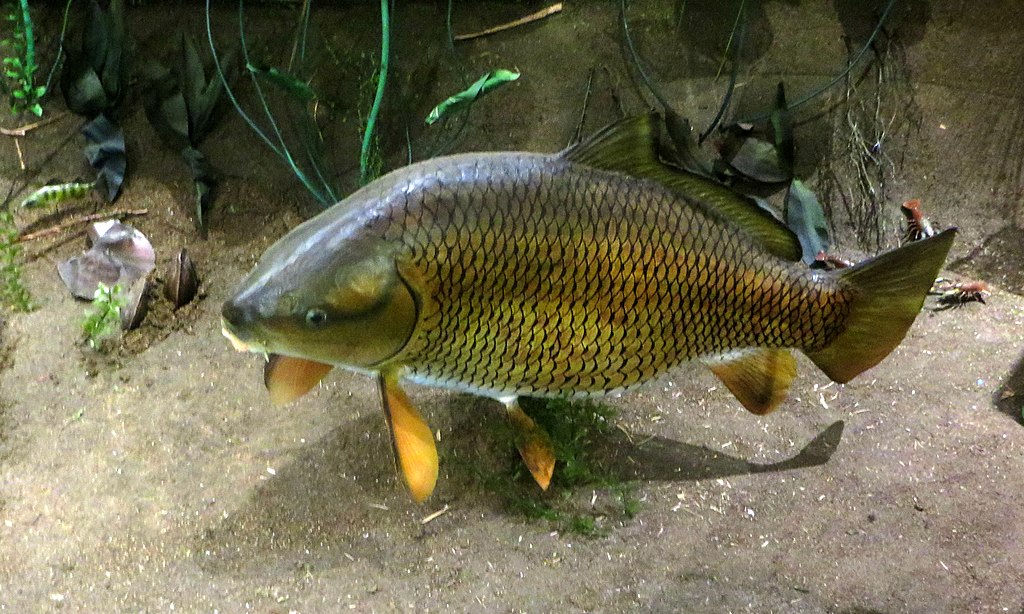
Buffalo fish—including the bigmouth, smallmouth, and black buffalo species—are North America’s largest members of the sucker family, capable of growing to massive proportions exceeding 80 pounds. Despite their size and fighting ability, these fish remain largely overlooked by sport anglers, partly due to misconceptions about their eating quality. When properly prepared, however, buffalo fish provide excellent table fare with firm, white flesh that rivals more popular food fish. Their bottom-feeding habits make them challenging to target intentionally, requiring specialized approaches with dough baits, corn, or small crawlers fished directly on the bottom. The bigmouth buffalo is particularly remarkable for its documented lifespan of over 100 years, making it one of the longest-lived freshwater fish species in North America.
Redhorse Suckers: The Spring Delicacy
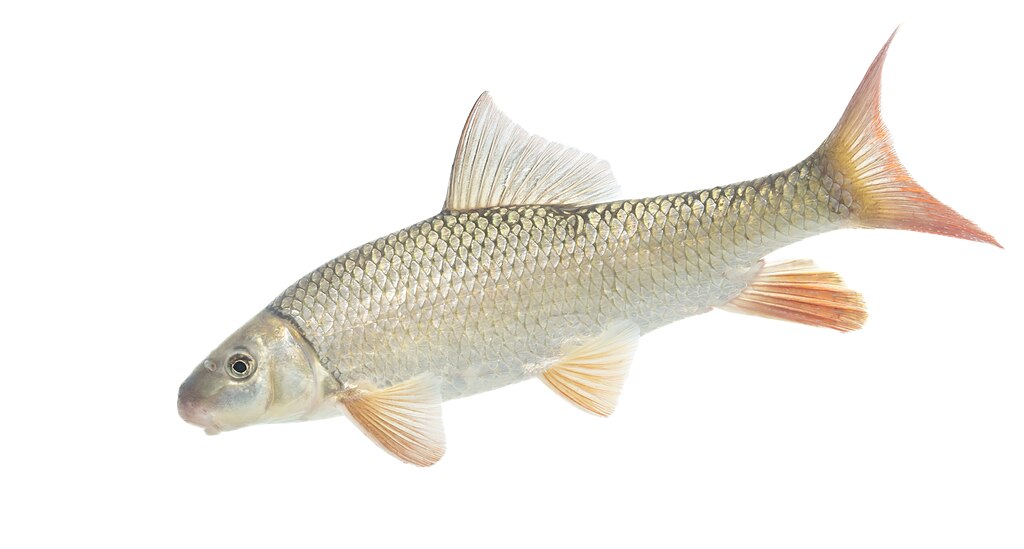
Various redhorse sucker species provide excellent spring fishing opportunities when they make their annual spawning runs into rocky streams and rivers. Despite being categorized as “rough fish,” redhorse are selective feeders that prefer clean, flowing waters, making them indicators of good water quality. Their powerful, torpedo-shaped bodies provide surprisingly strong fights on appropriate tackle, with fish commonly reaching 2-5 pounds depending on the species. Redhorse are particularly valued by those who know how to prepare them, with their firm white flesh being excellent when smoked or used in fish cakes. Targeting these fish often involves small hooks and natural baits like worms or larvae fished along gravel bottom areas during their spring spawning period.
Burbot: Freshwater’s Only True Cod
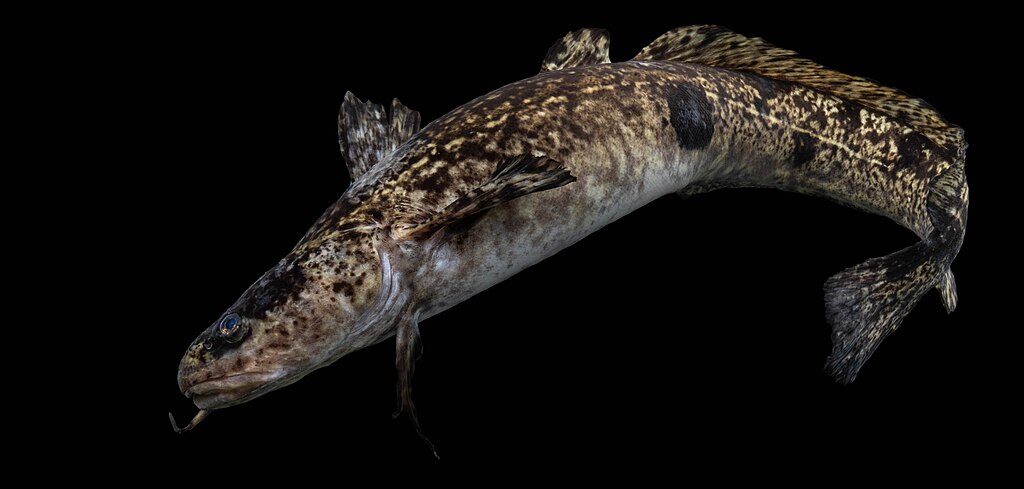
As North America’s only freshwater member of the cod family, burbot offer a truly unique angling experience, particularly during winter ice fishing when they become most active. These unusual fish, with their eel-like bodies and single chin barbel, prefer deep, cold waters and are primarily nocturnal predators that feed heavily during winter months when other fish species become less active. Their firm, white flesh is similar to lobster in texture and flavor, earning them nicknames like “poor man’s lobster” among those who appreciate their culinary value. Burbot can grow impressively large, with specimens exceeding 20 pounds documented, though most caught range between 2-8 pounds. Their winter feeding habits make them particularly valuable targets during ice fishing season when other fishing opportunities may be limited.
American Shad: The Fighting Migrants

American shad create exceptional seasonal fishing opportunities during their spring spawning runs when these ocean-dwelling fish enter freshwater rivers along the Atlantic coast. These members of the herring family typically weigh 3-5 pounds and are renowned for their fighting ability, making spectacular jumps and long runs when hooked. Their cyclical spawning migrations once supported massive commercial and recreational fisheries, though populations have declined in some rivers due to dam construction and habitat changes. Fishing for shad typically involves small, colorful lures called “shad darts” or small spoons worked in the current, with the fish being particularly sensitive to lure color on any given day. Beyond their sporting qualities, shad roe is considered a delicacy in many regions, though the adult fish are quite bony and require special preparation techniques.
Grass Carp: Vegetarian Giants
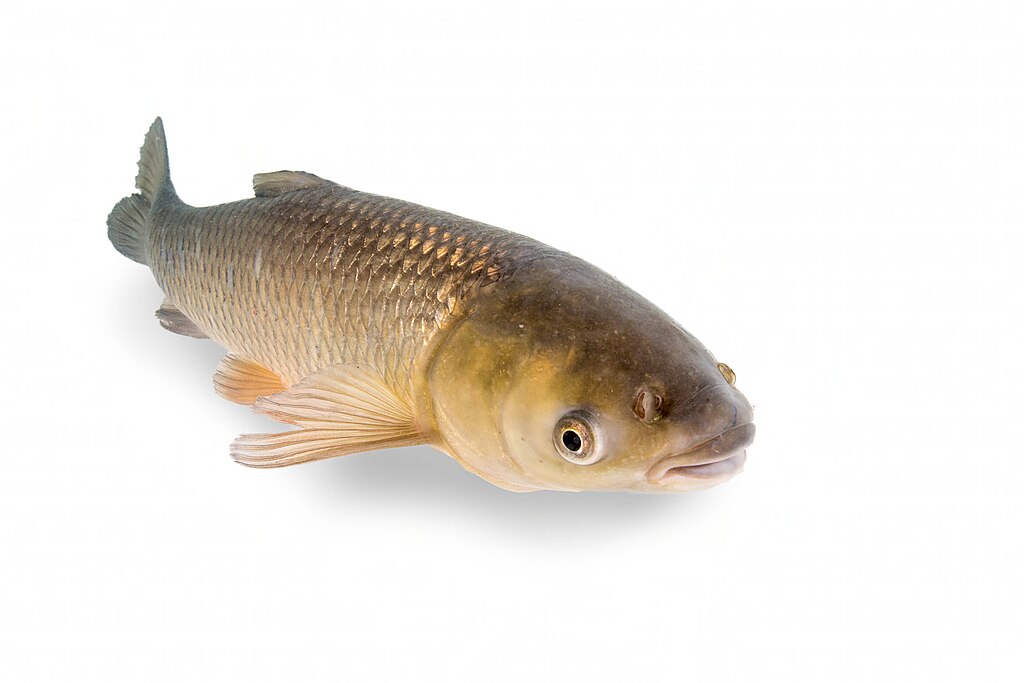
Though originally introduced for aquatic vegetation control, grass carp have established themselves as challenging sport fish in many waters across North America. These plant-eating members of the minnow family can grow to enormous sizes exceeding 50 pounds, with their power and endurance testing both angler and equipment when hooked. Despite being herbivores, grass carp can be targeted with specialized baits including corn, cherry tomatoes, and dough baits infused with plant scents or flavors. Their cautious feeding behavior and excellent eyesight make them particularly challenging to catch, requiring stealthy approaches and careful presentation. When hooked, grass carp are known for making spectacular runs, often stripping hundreds of feet of line in seconds and providing battles that can last 30 minutes or more.
Tactics and Techniques for Lesser-Known Species
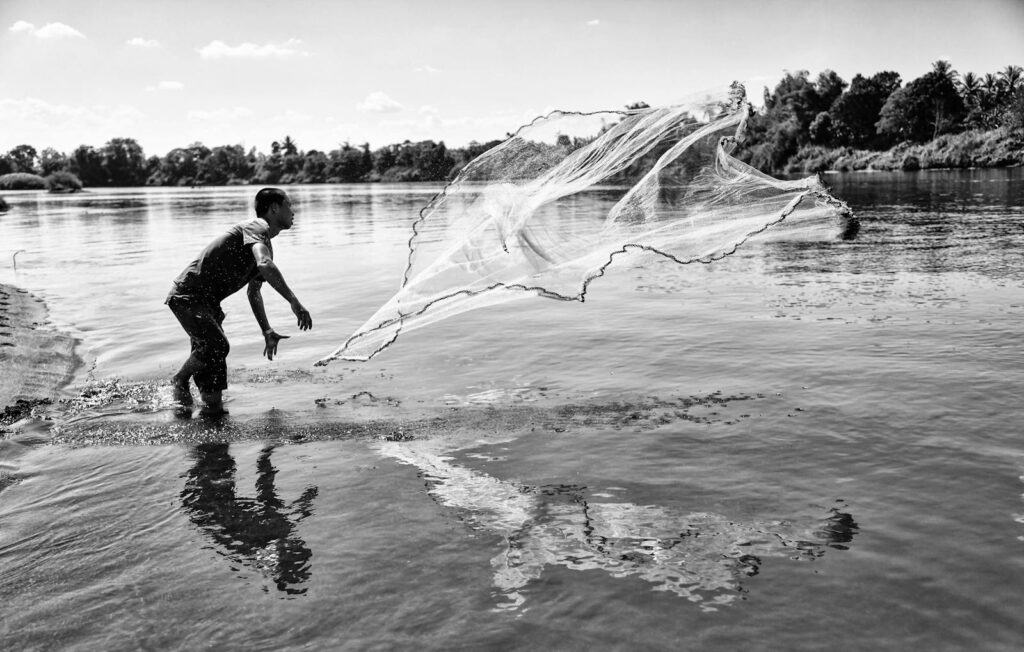
Successfully targeting these underappreciated species often requires adjusting your typical fishing approaches and learning new techniques specific to each fish. Research local regulations carefully, as harvest rules for these species vary widely between jurisdictions, with some having generous limits while others may be protected. Light to medium tackle is generally appropriate for most of these species, though specialized gear may be needed for the largest specimens like buffalo fish or alligator gar. Natural baits often outperform artificial lures for many of these species, with nightcrawlers, crayfish, cut bait, and dough baits being particularly effective depending on the target. Timing can be crucial, especially for migratory species like shad or seasonal spawners like white bass, with local knowledge being invaluable for determining prime fishing periods.
Conservation Considerations
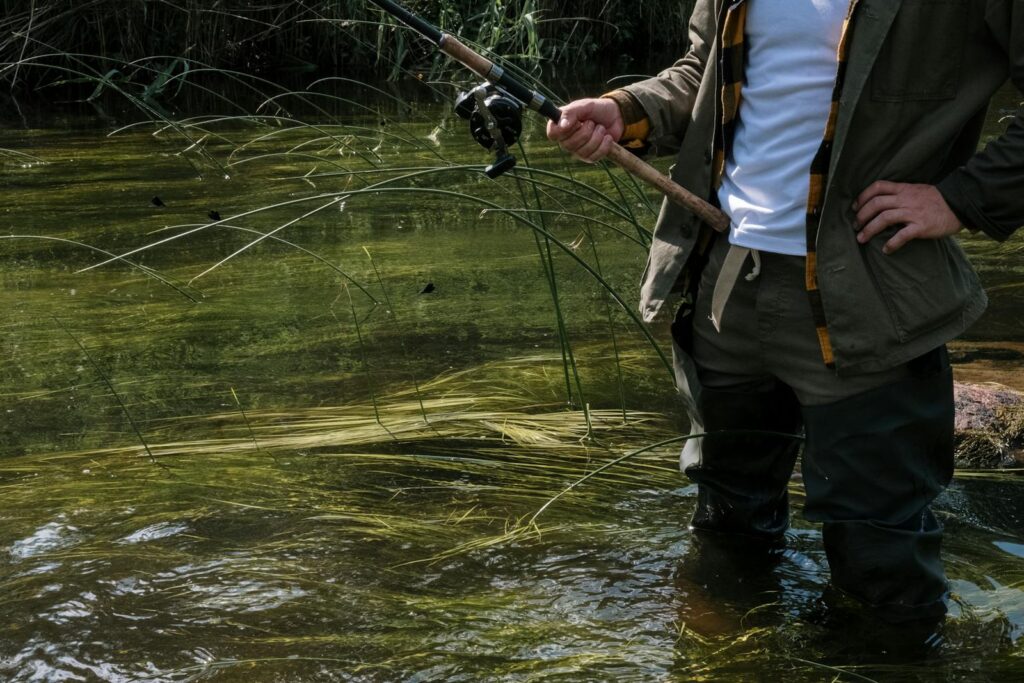
While targeting these lesser-known species can provide exciting new angling experiences, responsible fishing practices remain essential for their conservation. Many of these underappreciated fish play vital ecological roles in their native ecosystems, with some species having faced population declines due to habitat loss, pollution, or dam construction. Practice selective harvest by keeping only what you’ll eat and releasing larger, breeding-sized specimens that contribute disproportionately to future populations. Some species, particularly ancient, slow-growing fish like alligator gar, are especially vulnerable to overharvest and benefit from catch-and-release practices. Take time to learn proper handling techniques for each species, as some have specialized requirements—for instance, the sharp scales of gar require gloves for safe handling, while the slime coating of suckers should be preserved for the fish’s health.
## Conclusion
Expanding your angling horizons to include these lesser-known freshwater species can transform how you experience fishing. Beyond adding variety to your fishing adventures, targeting these underappreciated fish often leads to less crowded fishing spots, new techniques to master, and deeper appreciation for the diversity of freshwater ecosystems. Many of these species thrive during seasons or in conditions when more popular gamefish are less active, potentially extending your productive fishing season throughout the year. Whether you’re seeking new culinary experiences, testing different fishing skills, or simply looking to connect with native species that have been swimming in North American waters for millions of years, these ten fish represent just the beginning of the incredible diversity waiting beneath the surface of our freshwater resources.

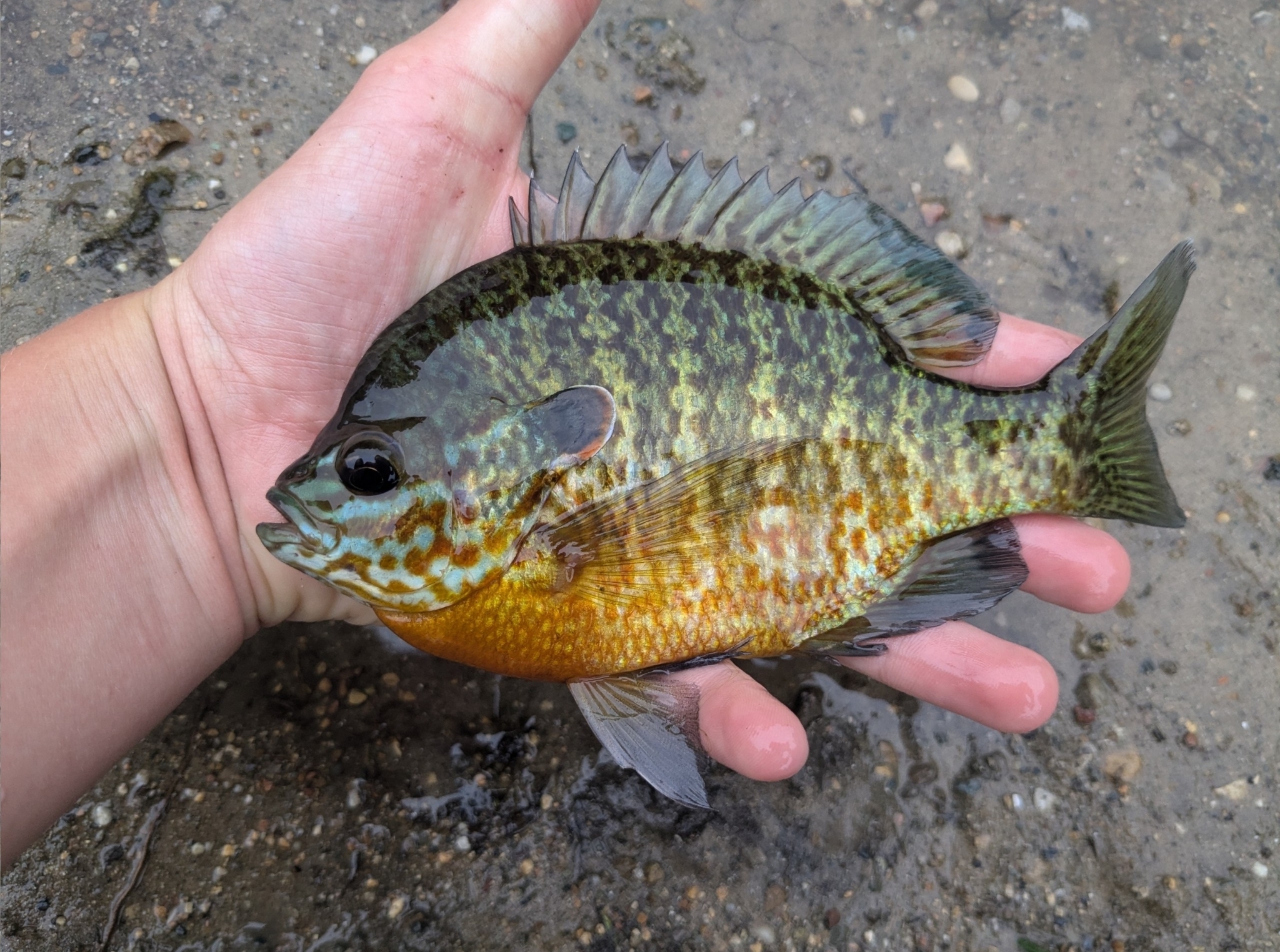












Post Comment